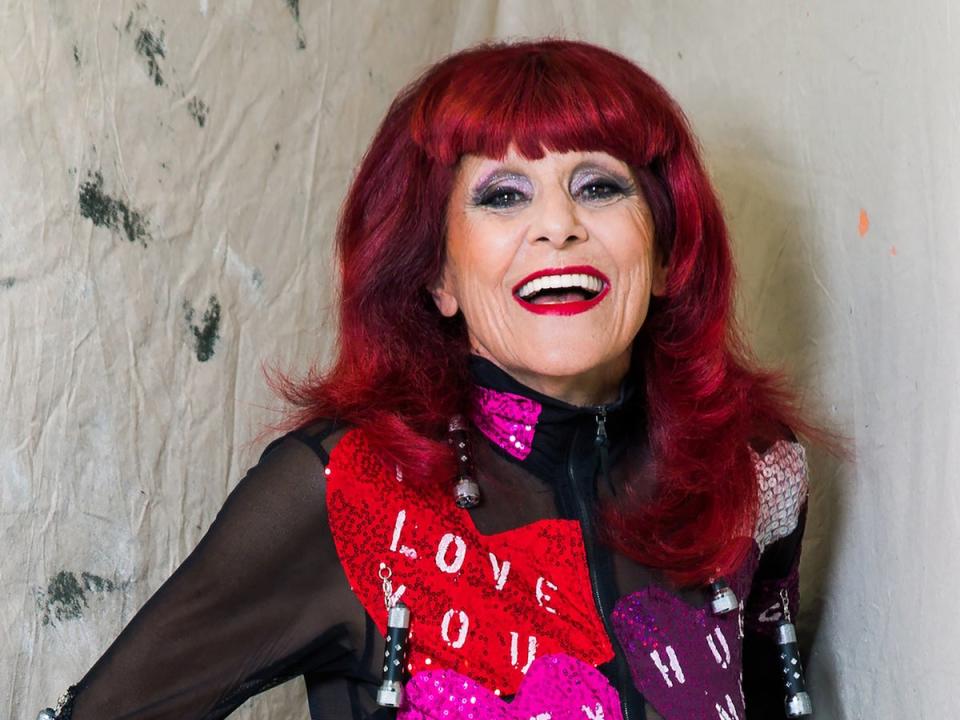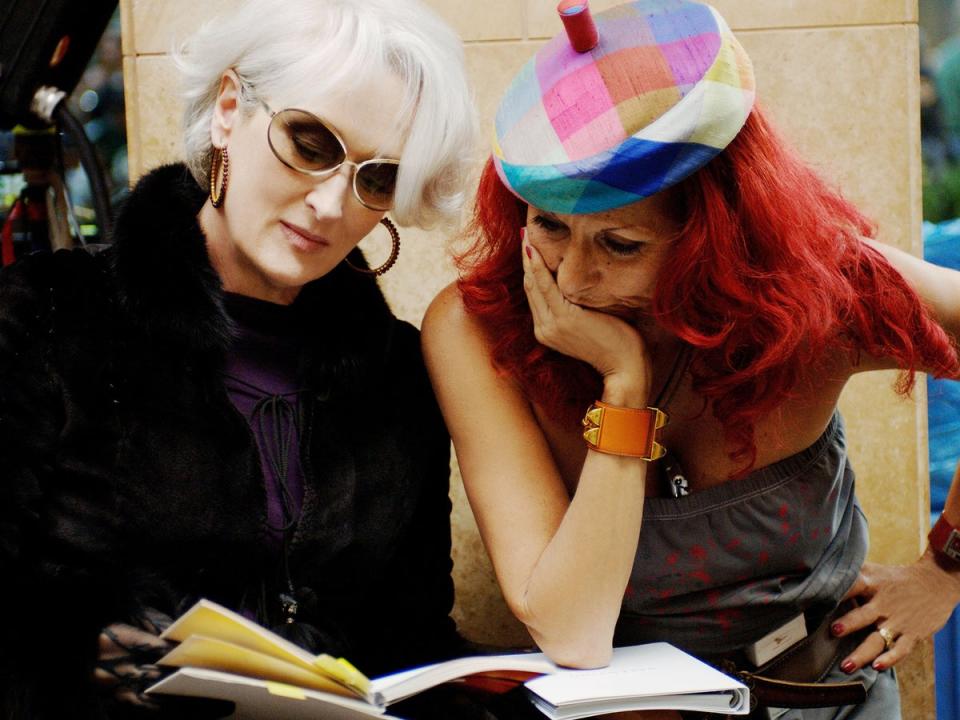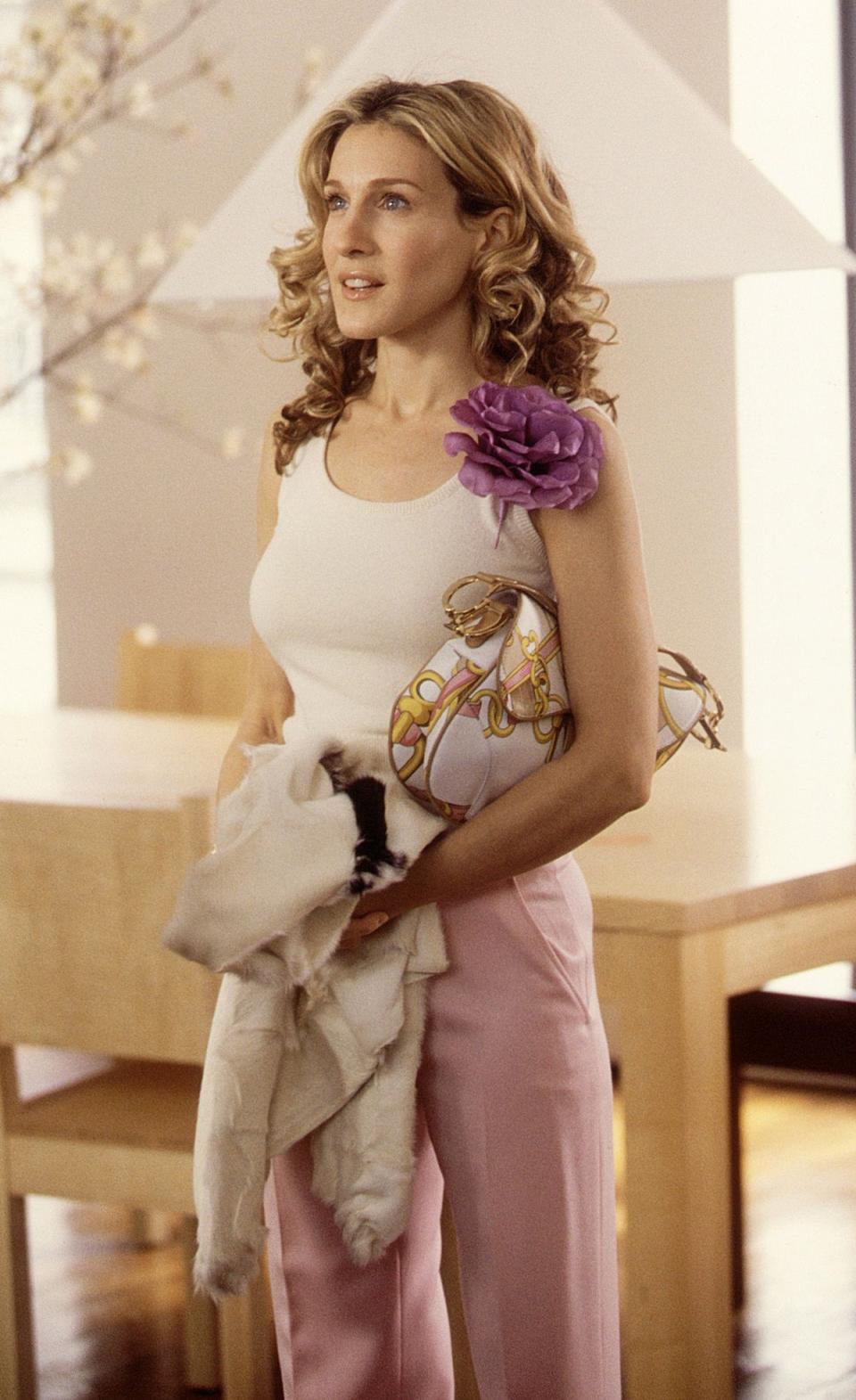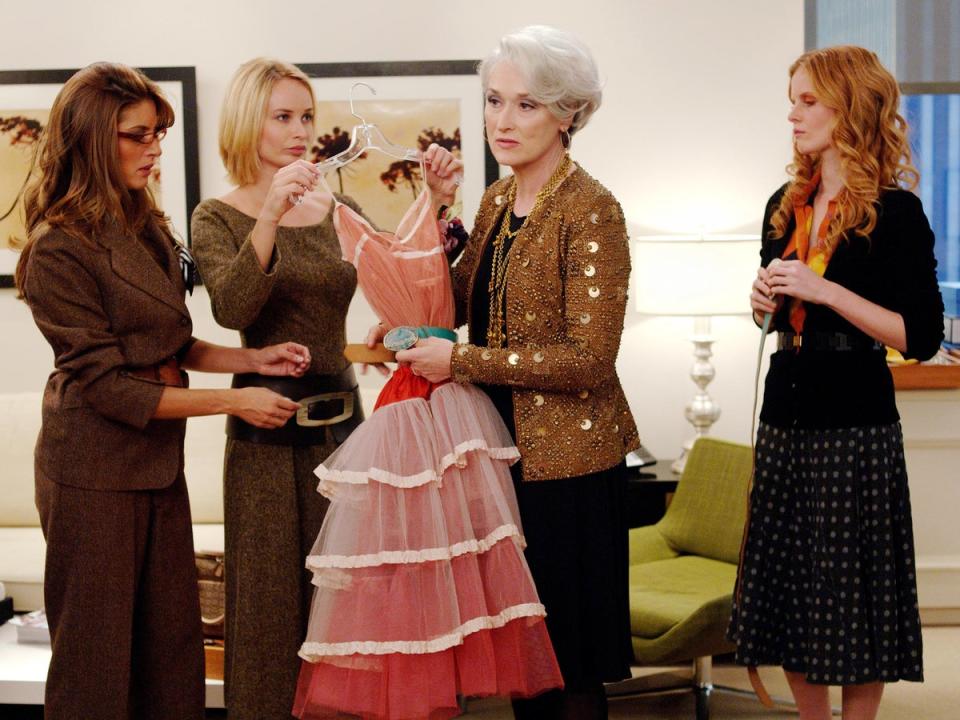‘You can’t be a dictator and throw clothes on people’: Sex and the City designer Patricia Field on Studio 54, Chris Noth and dressing Carrie Bradshaw

Patricia Field would never be caught dead in tracksuit bottoms. But here’s a secret – the red-haired, straight-talking style siren does wear them off duty. “I wear them at home if it’s cold and I want to warm up a bit,” she explains. “But I don’t go out and about in that.” The storied costume designer is telling me about a trip she made to Paris ahead of Netflix’s Emily in Paris, for which she is a consultant. “I went to check out the Paris chic. Everybody was just in jeans, sweatpants and hoodies. I called Darren Star [the show’s creator] and said, ‘this is where Paris chic came to die’,” she sighs, before adding, cuttingly, “I don’t know; I just prefer identity.”
Nobody knows sartorial identity quite like Field. The 81-year-old is famous for masterminding the wardrobe of one of TV’s greatest fashion icons: Sex and the City’s Carrie Bradshaw. Played by Sarah Jessica Parker, the character became an instant style maven when the HBO series premiered in 1998 – and there wasn’t a pair of sweatpants in sight. Whether it was a purple sequin Fendi baguette, a John Galliano for Dior newspaper dress, or a $5 tutu, Carrie’s eclectic and often rather bonkers outfits acquired cult status to the point that they became characters of their own, firmly establishing themselves in the pages of fashion’s history books. Despite the series ending almost 20 years ago, Field’s work is still regularly commemorated on social media, mostly via the hugely popular account @everyoutfitonsatc, which boasts 738,000 followers – including Parker herself and Cynthia Nixon, who played Carrie’s slightly dowdier-dressed pal, Miranda Hobbes.
In the two decades since the show, Field has firmly established herself as the costume designer responsible for some of pop culture’s most memorable looks. There was Betty Suarez’s geek-chic wardrobe in Ugly Betty. Diana Trout’s infamous necklace collection in Younger. And, of course, fashion bible editor and inspiration for a thousand memes, Miranda Priestly in The Devil Wears Prada, for which she received an Oscar nomination. Now, Field has published a memoir, Pat in the City, which charts the entirety of her career, from her early beginnings as the young New Yorker working in her mother’s chain of dry cleaners to how she became one of the fashion industry’s most prolific players.
“I can’t really say there was one point when I realised I had an eye for fashion,” she tells me over Zoom from her gallery, ARTFASHION, in Manhattan, speaking in a deep, gravelly New York drawl that sounds like she’s just smoked an entire pack of cigarettes. “I just responded to the reaction I was getting from others; it was more of an organic situation.”
Born in Queens to a Greek mother and Armenian father, Field opened her first boutique, Pants Pub, at the age of 24 after having studied philosophy and government at New York University. “I wanted a happening and modern place that catered to young and trendy women,” she writes in the book, explaining that her studies “had no practical application in the world outside the ivory tower”.
Pants Pub, which specialised in Mod items such as go-go boots, was a slow-building success, but it was five years in, after a change of name and address, that Field would really find her feet in fashion. Her namesake shop opened in 1971 in the East Village. Run by Field and a bevy of famously colourful characters, including performers like Amanda Lepore and Armen Ra (“the shop was all about letting them shine”), it quickly became a go-to spot for New York’s disco-dancing, club-hopping set of the Seventies and Eighties. It was a place where you could just as easily pick up a pair of jeans and a chiffon blouse as a Venetian mask or Thai boxing shorts.
Me and Cynthia Nixon have been through a lot together. People have nothing better to talk about than stupid gossip
Patti Smith was a regular, as was Debbie Harry, Matt Dillon and anyone stopping off on their way to Studio 54, looking to add a bit of pizzazz to their nighttime look. In the book, we discover that Madonna had to wait outside for an hour until the shop opened because she arrived too early, that Dillon flashed shop staff when trying on clothes because he didn’t wear underwear, and that one sales assistant warned a customer that the shoes she’d requested to try on were “really expensive”. That customer? Cyndi Lauper.
“The store became a place that a lot of young people started going to because it was affordable,” says Field. “It was disco time. But those days seem kind of over… unless I’m over. I don’t know.” We agree that today’s nightlife has nothing on the likes of Studio 54, where Field met several of her closest friends, including Andy Warhol and Halston. “I think music changed,” she says. “Rock’n’roll came in and that wasn’t really my thing. I love disco; you would walk into one of those clubs and instantly get on the dance floor. I’m not sure that happens much now.”
As we speak, I get the sense that, had things not changed, Field would still be on that dance floor most nights. Talking to her is a hoot. Draped in silver jewellery over a striped halter-neck top with leather gloves pulled all the way up her arms, she is every bit the character you’d expect. Her signature cherry red hair is as bright as ever, her demeanour dry and shrewd. An assistant sits beside her, and Field often answers questions I didn’t ask, or talks at length about the ins and outs of real estate in New York for no real reason in particular.
She allows very little room for negativity; when I ask about the mental health struggles she references in the book, for example, she can’t recall writing about them. “I suppose I did,” she reasons. “A little panic attack here and there, it’s human.” Field’s assistant reminds her of one particular incident described in the book, when her apartment was broken into. “Oh, yes. That shook me up a bit,” she recalls. “But I have a friend who’s a doctor and after that I went to see him on a regular basis for a little while. That was a good experience, actually.”

The book does tap into darker memories, though, like living through the Aids crisis and losing friends to the disease, including Halston and her store manager, Tim. This was partly what drew Field, who has had long-term girlfriends but never been married, into the city’s underground ballroom scene. “The balls offered black and brown LGBTQ youth a glamorous break from the everyday struggles of homophobia, transphobia, disease, racism and poverty,” she writes.
Field’s store was already a New York City landmark, and its accompanying label, House of Field, integral to the fashion industry, when she secured the gig that would propel her into the spotlight. She had already worked as a costume designer on several TV and film sets when she met Sarah Jessica Parker on the set of Miami Rhapsody. It was Parker that introduced her to Star, the creator and writer of a forthcoming series called Sex and the City, based on a book by Candace Bushnell.
Originally, there was a different costume designer on board for the pilot, but Field never met her. In Pat and the City, she writes at length about how Carrie’s look was a complete collaboration with Parker, with whom she is still in touch. “She is such a fashionista,” Field says now of the actor. “It was just natural. You can’t be a dictator and throw clothes on people. You have to respect what you learn about them, and combine it with what you know about what you do. And that’s kind of the recipe.”

Her relationships with the rest of the cast were good, too, despite a seemingly disparaging comment to The Sunday Times Style about Nixon in 2021 (“she thinks she knows everything – and she doesn’t”). The remark was widely reported as a harsh criticism – Field rolls her eyes at this now and says it was blown out of proportion. “Me and Cynthia have been through a lot together,” she says. “People have nothing better to talk about than stupid gossip.”
While the pair haven’t spoken about the remark, they are still in touch, she says. “I’m also in touch with Kim [Cattrall],” Field adds. “The only person I’m not so much in touch with is…” she trails off, looking to her assistant, who swiftly replies: “Kristin Davis.” “Yes, Kristin,” says Field of the actor who played the cheery and marriage-obsessed Charlotte York, “because she’s out in LA.”
Another person on SATC with whom Field was close was Chris Noth, who played Carrie’s on-off love interest, Big. “He was my Cary Grant,” she says, smiling. In the book, Field fondly recalls how Noth would call her “one of the guys” during their fittings. I ask what she made of the allegations that surfaced in December 2021, when the actor was accused of sexual assault by five women.
“I am not in control of people in their lives,” says Field, with a shrug. “You know, it takes two to tango. My relationship with Chris was great. Personal relationships are funny. You hope people get off on the right foot but, you know, you make your own relationships.” The two still run into each other from time to time. Noth has denied all allegations but was written out of CBS series The Equalizer and his scenes in the finale of the SATC reboot And Just Like That… were cut.

Field wasn’t available to work on the reboot due to being tied up with Emily in Paris. “I would’ve done it if I was free,” she insists. As for criticisms that Emily would never be able to afford the clothes Field and her team put her in – something people often also say about Carrie – it’s not something that keeps her up at night. “I’m here to entertain; I’m not doing a documentary,” she says. “Who cares if the characters can’t afford the clothes? Do you like it? Does it look pretty? Does it inspire you? That’s all I care about.”
Of all the absurdity that Field has encountered in her life, nothing baffles her more than her own fame. “I’ve been working a long time, and recently a lot of focus has come on to me. But I was never thinking about fame. Honestly, I was just doing what I enjoy and that is basically what I try to keep doing in my life. Luckily,” she says, playing with one of the many silver chains dangled around her neck, “I’ve been able to enjoy my life.”
‘Pat in the City’ is published by Fourth Estate today

 Yahoo News
Yahoo News 